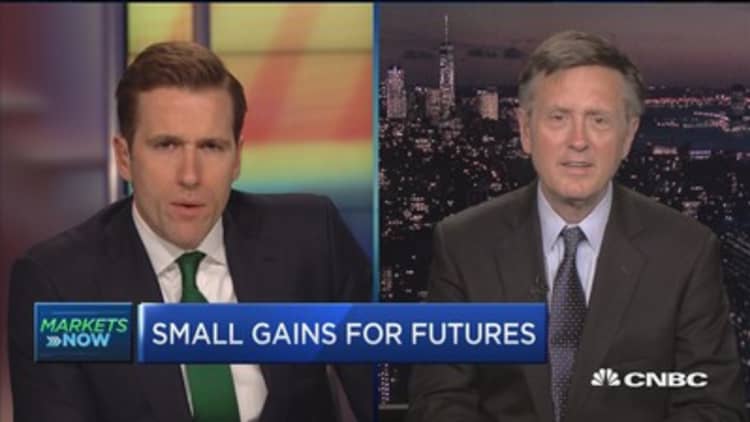The Treasury is considering 50- and 100-year bonds, but there may be more interest in a new 20-year bond, gone since the Reagan era.
Treasury Secretary Steven Mnuchin has tossed out the idea of bonds with very long maturities as a way to help the government lock in current low rates over a longer period. But some on the Street have been lukewarm to the idea amid doubts about demand.
In its refunding announcement Thursday, the Treasury disclosed that it is studying the possibility of ultra-long bonds, with maturities greater than 30 years, currently the bond with the longest maturity. It also said it is preparing for the time when the Fed begins to reduce its giant $4.5 trillion balance sheet — by buying fewer Treasurys and mortgage securities, and perhaps ultimately even unloading the ones it holds.
Separately, a Treasury advisory group met this week and said there would be interest in reviving the 20-year Treasury but not much interest in a 100-year security.
"The committee recommended that Treasury

"The 20-year is the new 50-year," said Ian Lyngen, head of U.S. rate strategy at BMO.
Bond traders were awaiting an announcement from Treasury on Wednesday morning, and some thought it might include an actual announcement of expanded issuance, plus a new 50-year bond. But when that didn't come, yields of 10-year and 30-year bonds slipped slightly and the yield curve flattened. Yields move inversely to price.
"The initial trade was a quick flurry down, and as people realized it, the long end has traded better. The curve has flattened out 2 basis points. Bonds are about 5 basis points flatter. The bond traded very well. You're not seeing more issuance yet at the long end and you're not seeing a 50-year bond," said Justin Lederer, Treasury strategist at Cantor Fitzgerald. The curve flattened as yields at the short end, 2-year
The Treasury faces increased financing needs, both when the Fed begins to pare back its balance sheet,
McCarthy said the 20-year was discontinued in 1986, because of a "kink in the yield curve. The 20-year was the high-yield point on the yield curve, so it was cheaper for the Treasury to discontinue the 20-year and just distribute the borrowing between the 10-year and 30-year." The 7-year was also discontinued at one point but reintroduced. There had also been a 4-year, which was eliminated, but the Treasury has regular auctions for 2-, 3- and 5-year securities.
"Treasury is already issuing the securities they find to be most appealing. The reason they are considering other options is they have no choice. They need to do this in order to address a tidal wave of increased financing from budget deficits, the Fed shrinking its balance sheet and maybe from Trump tax cuts and infrastructure spending," said McCarthy.
David Ader, chief macro strategist at Informa Financial Intelligence, said he expects demand for a 50-year security. "I would have thought that overseas demand for a 50-year would be good. They have real serious pension issues," he said.
But some strategists believe the 50-year will not be as liquid and will not come to auction frequently if the Treasury does create it.
"We've done our homework, and we think this isn't similar to what's in Europe," said George Goncalves, head of fixed income strategy at Nomura. "We're talking about the U.S., which is the benchmark of global bond markets and what is used as a reference for liquidity around the whole world, as opposed to emerging markets and other countries opportunistically issuing long-term bonds because there's some demand in their pensions."
He added: "We have to think about the stability and liquidity that our bond market creates for everything." Goncalves said the longer maturity debt does not appeal to some dealers. "The longest they could probably go was 50 years and not do much in terms of size. We're not recommending it. We just don't think there's enough demand for it. We think it would be harder to issue in a predictable way," he said.
He said the Treasury Borrowing Advisory Committee makes recommendations but the Treasury will ultimately decide the mix it needs to meet its financing needs. "We recommend either increasing the auction size of the 10-year and 30-year or introducing a 20-year which is also mentioned by TBAC. That would make sense," said Goncalves, who notes there is already a 20-year duration in the futures market.
The committee also said it recommended that more work


